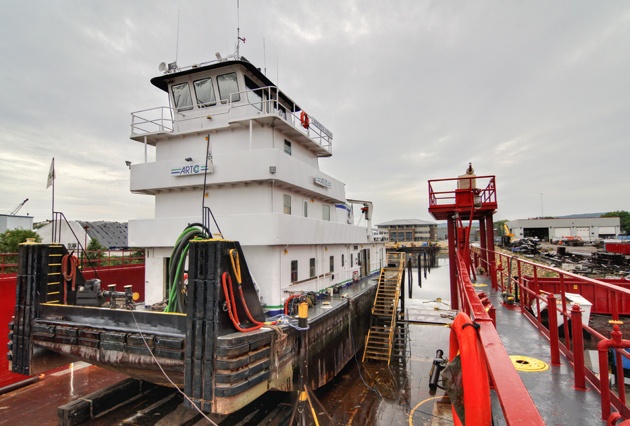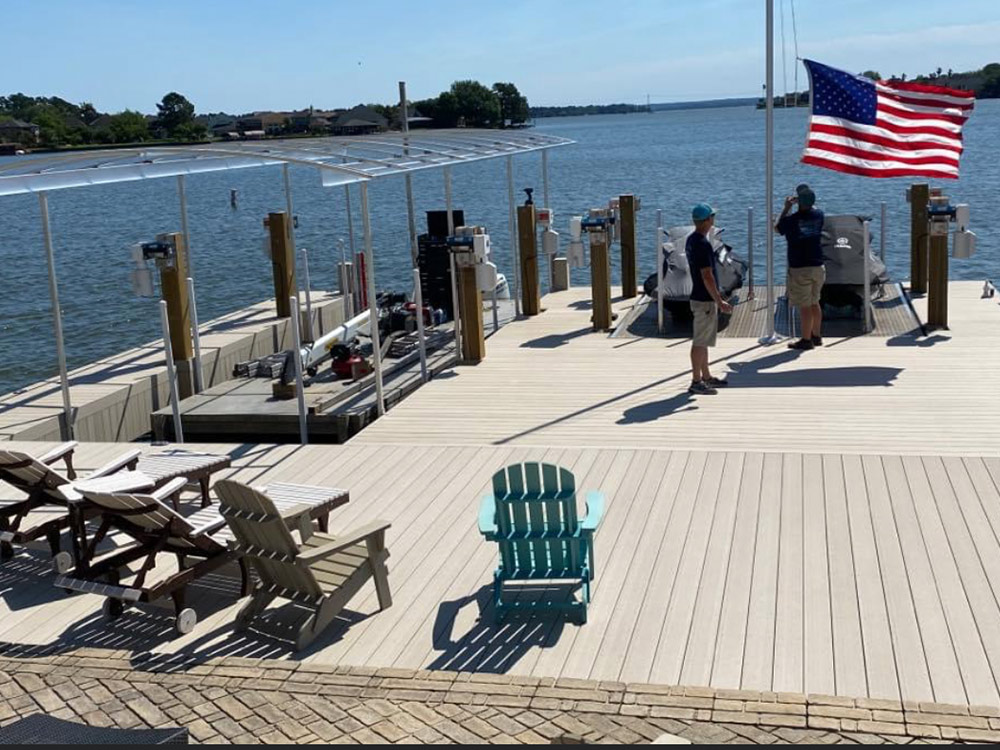Why Regular Maintenance Can Lower Future Dock Repairs
Why Regular Maintenance Can Lower Future Dock Repairs
Blog Article
Exactly How to Address Common Dock Repair Service Issues for Safe Water Tasks

Identifying Common Dock Issues
Identifying usual dock problems is crucial for keeping the performance and safety of your waterside residential property. Routine evaluations can aid discover problems before they become serious, making certain both the longevity of the dock and the safety and security of those that utilize it.
Another usual issue is the destruction of flotation tools. These devices are essential for keeping the dock buoyant, and any type of damage or leaks can trigger the dock to list or sink. Consistently looking for leaks or water logged drifts can preempt much more considerable issues.
Furthermore, algae and barnacle buildup on the dock's surface can create unsafe and hazardous conditions. This biofouling not just positions a risk to customers but can also speed up the wear and tear of the dock materials.
Last but not least, examining for indicators of corrosion on steel components is crucial. Rust can compromise the integrity of the dock's framework, making it harmful. By routinely determining these usual dock issues, you can guarantee that your dock stays useful and safe and secure for years to find.
Fixing Rotting Timber
When dealing with the issue of decomposing timber on your dock, it is critical to act promptly to prevent further degeneration. Begin by extensively evaluating the whole framework to identify all affected areas. Use a screwdriver to penetrate the timber; if it sinks in quickly, the wood is most likely deteriorated and needs immediate attention.
As soon as identified, remove the deteriorated areas using a saw or chisel. Be sure to cut down to healthy and balanced, solid wood, ensuring you get rid of all jeopardized material. After removal, treat the remaining wood with a wood preservative to avoid future rot. This treatment will help secure versus wetness, which is the main root cause of wood degeneration.
Next, replace the eliminated sections with marine-grade lumber or pressure-treated timber, which are much more resistant to water damages. Protect the new pieces with galvanized or stainless-steel bolts to stop deterioration. In addition, applying a waterproof sealer to the new wood can provide an added layer of protection.
Safeguarding Loose Boards
Exactly how do you guarantee your dock stays useful and risk-free for all its users? One vital element is securing loosened boards, which can otherwise pose significant risks. Loosened boards not only enhance the risk of stumbling but can also jeopardize the structural stability of the whole dock.

For reinstallation, use galvanized or stainless steel screws, as these products supply superior resistance to corrosion in aquatic settings. Make certain the screws are long enough to pass through deep into the underlying support structure, yet not so lengthy that they protrude via the dock's surface. Pre-drilling pilot holes can aid prevent the timber from splitting.
Last but not least, keep a normal examination routine to determine and resolve any kind of new concerns without delay. By safeguarding loose boards effectively, you add to the general safety and security and longevity of your dock, making it a trustworthy platform for water activities.
Supporting Unsteady Pilings
Making sure the stability of unsteady pilings is vital to keeping a practical and risk-free dock. Make use of a degree to examine for upright alignment and ensure they are driven deep enough into the substrate to supply appropriate Get More Information support.
If the pilings are found to be unsteady, one efficient technique for support is the use of added supporting. Cross-bracing with dealt with lumber or galvanized steel can considerably improve stability. Anchor the braces safely to both the pilings and the dock framework to disperse tons uniformly.

Routine upkeep and regular reassessment of the pilings' security are critical to making certain long-term dock safety and capability.
Changing Rusty Hardware
Dealing with unstable pilings is just one aspect of preserving a dock's stability; one more vital issue is changing rusty hardware. Gradually, exposure to wetness and salt can cause the oxidation and rust of braces, screws, and screws, endangering the entire structure's safety and security. Routine inspection for rust is crucial, particularly after extreme weather or seasonal adjustments.
When corroded equipment is determined, prompt action is called for. Begin by picking marine-grade stainless steel or galvanized equipment, both created to resist the extreme aquatic environment. Guarantee that you have the proper devices, such as wrenches and screwdrivers, to safely eliminate the old, corroded items without triggering further damage to the dock.
After removing the rustic equipment, thoroughly tidy the influenced areas to eliminate any kind of residual rust or debris. Apply a rust-inhibiting primer to subjected steel surface areas before mounting the new hardware. Tighten all components firmly to protect against future loosening, and occasionally inspect the installations to make sure continuous security.
Changing corroded equipment not only extends the dock's life-span however additionally dramatically boosts the safety and security of water tasks. By proactively handling deterioration, you protect both the framework and its customers, guaranteeing a protected and enjoyable waterside experience.
Conclusion
Normal examinations and maintenance are necessary to address usual dock repair service issues and make sure safe water activities. By determining and check out this site fixing problems such as decaying wood, loose boards, unsteady pilings, and corroded equipment, structural stability and durability can be substantially improved. The application of suitable treatments and marine-grade products even more fortifies the dock versus ecological stressors. Such proactive steps contribute to the general security and functionality of dock frameworks, promoting a safe environment for water-based tasks.
Making certain the safety and security of water activities pivots considerably on the correct upkeep and repair of docks (Dock Repairs). These gadgets are necessary for maintaining the dock buoyant, and any kind of damages or punctures can create the dock to list or sink. By consistently identifying these typical dock concerns, you can make sure that your dock remains safe and useful for years to come
Guaranteeing the security of unstable pilings is extremely important to preserving a secure and functional dock.Routine examinations and upkeep are vital to address typical dock fixing concerns and make certain safe water activities.
Report this page